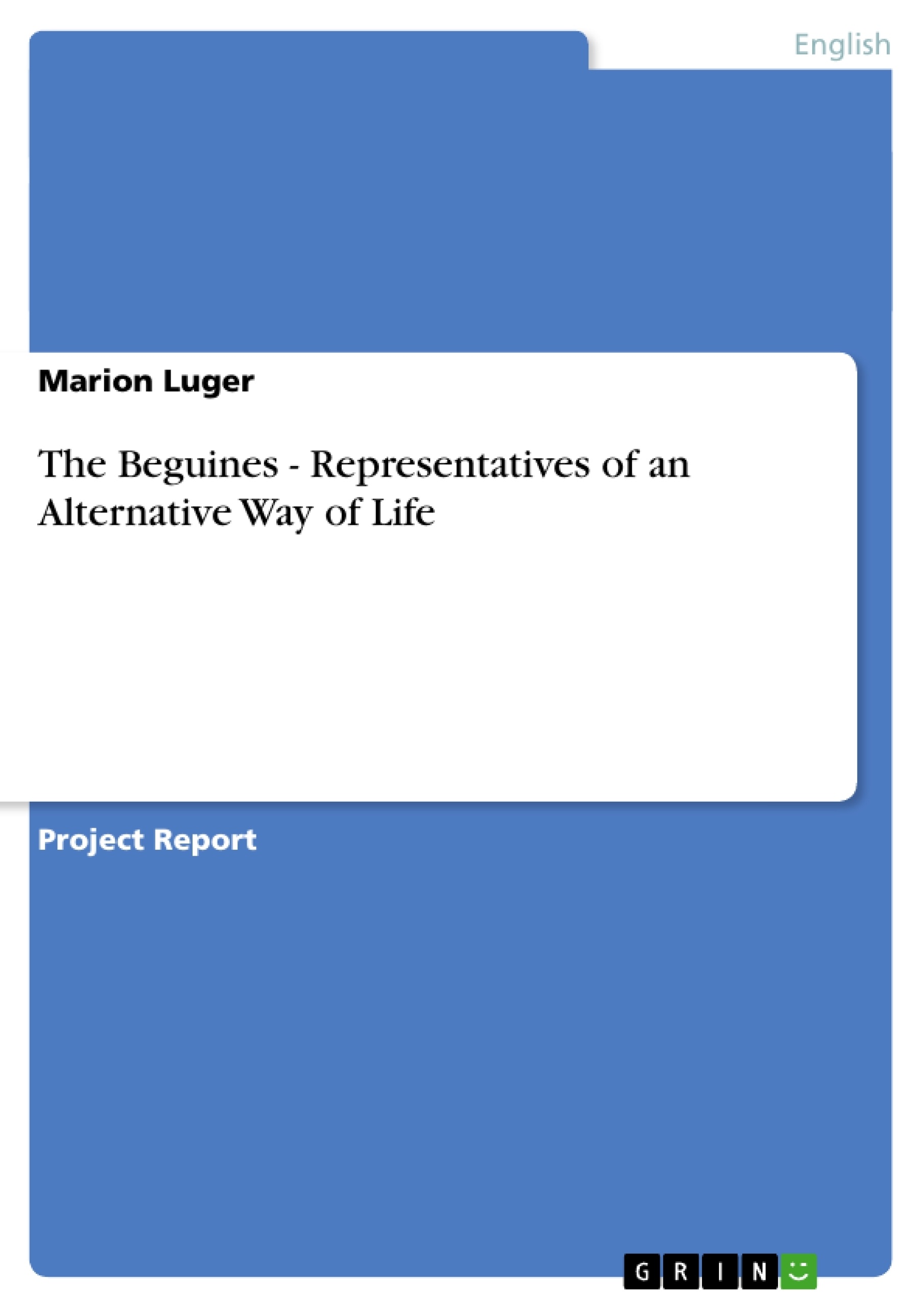Beguines have been the subject of numerous controversies from the Middle Ages to the present. Their contentious history results partly from the heterogeneous composition of their movement and the difficulty of defining this wide-spread group of pious women. One point at least is agreed upon: The beguine movement arose at the beginning of the thirteenth century and existed until the early Renaissance; geographically it was situated in the more developed countries of Central and Western Europe (i. e. France, Belgium, Rhineland Germany, Netherlands).
The aim of this essay, however, is concerned less in a description of the external circumstances than in an analysis of the beguinal way of life. Firstly, this investigation deals with the typical features of the beguine movement focussing on their alternative lifestyle for medieval women (section II). Thereupon, section III explores, whether the components of this innovative movement caused a sensation for their contemporaries and how the reactions of the secular and the ecclesiastical authorities influenced its development. Finally, section IV examines the background and the conditions for the diminution of the religious movement.
Inhaltsverzeichnis (Table of Contents)
- I. Introduction
- II. What is alternative?
- III. Reactions of the public.
- IV. Decline of the origins.
- V. Summary.
Zielsetzung und Themenschwerpunkte (Objectives and Key Themes)
This essay aims to analyze the beguine way of life, rather than simply describing their external circumstances. It investigates the typical features of the beguine movement, focusing on their alternative lifestyle for medieval women. It also explores how their innovative movement was received by contemporaries and examines the influence of secular and ecclesiastical authorities on its development. Finally, it delves into the background and conditions for the decline of this religious movement.
- The beguine movement's alternative lifestyle for medieval women.
- Public reaction to the beguine movement and its influence on its development.
- The decline of the beguine movement and its underlying causes.
- The diversity of beguine communities and their organization.
- The role of spirituality, penitence, and charity in the beguine way of life.
Zusammenfassung der Kapitel (Chapter Summaries)
The Introduction provides an overview of the beguine movement, highlighting its controversial history and geographical reach. It also outlines the essay's focus on analyzing the beguine way of life.
The chapter "What is alternative?" examines the central elements of the beguine lifestyle, including their motivation to live a life of religiousness, penitence, charity, poverty, chastity, and obedience. It explores how the movement attracted members of the nobility and patricians, who consciously chose to renounce a traditional nun's life. The chapter also addresses the diversity within the movement, including different forms of organization, living arrangements, and economic practices.
The chapter "Reactions of the public" analyzes the public's response to the beguine movement. It discusses how the innovative nature of this movement provoked various reactions from secular and ecclesiastical authorities, ultimately impacting its development.
Schlüsselwörter (Keywords)
The core keywords and focus topics of this essay include: beguines, alternative lifestyle, medieval women, religious movement, spirituality, penitence, charity, poverty, chastity, obedience, diversity, public reaction, ecclesiastical authorities, decline, and origins.
- Arbeit zitieren
- Marion Luger (Autor:in), 2000, The Beguines - Representatives of an Alternative Way of Life, München, GRIN Verlag, https://www.grin.com/document/134920



